Nuttalia obscurata (Reeve, 1857)Common name(s): Purple mahogany clam, Dark mahogany clam, Varnish clam, Savory clam |
|
| Synonyms: | 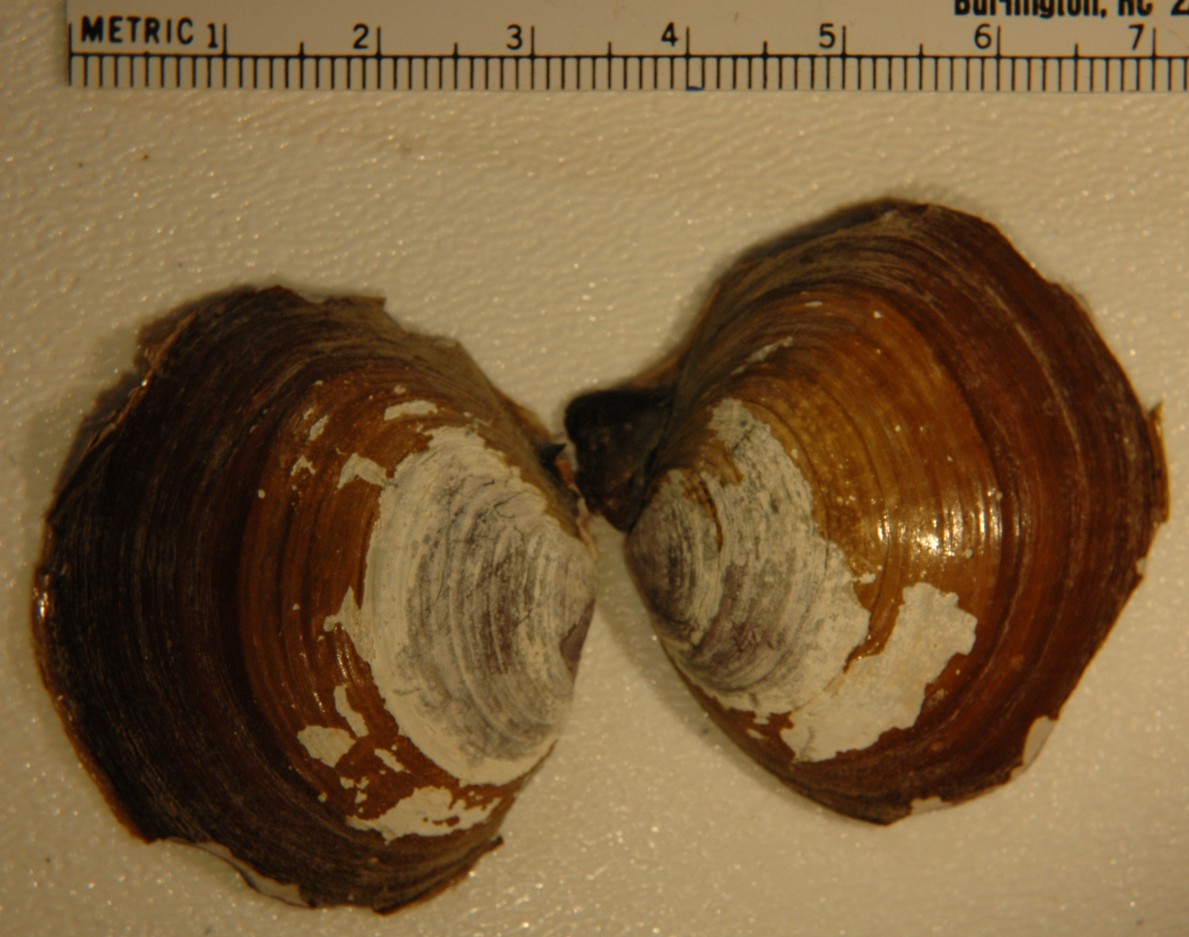 |
| Phylum Mollusca
Class Bivalvia Subclass Heterodonta Order Veneroida Superfamily Tellinoidea Family Psammobiidae (Garidae) |
|
| Nuttalia obscurata shell found at Sucia Island, San Juan Islands,, WA | |
| (Photo by: Dave Cowles, August 2006) | |
How to Distinguish from Similar Species:Nuttallia nuttallii lives farther south, in California and Baja California. The oval shape with extensive shiny periostracum and purple interior are unique to this clam in our area. Venerupis philippinarum, another introduced clam, may have a purple stain inside but the outer shell is sculptured with radial ridges and concentric growth lines, without shiny brown periostracum.
Geographical Range: Japan, British Columbia, San Juan Islands Area (Introduced from Japan)
Depth Range: High to mid intertidal
Habitat: In sand or sand/gravel, often in areas of freshwater seepage.
Biology/Natural
History:
Clams of
this genus live deeply buried (to 20 cm) in the sediment, resting on
their
right side with their long siphons extending to the surface.
They
are non-selective suspension feeders.
This species was recently (1980's or 1990's) introduced from Japan
and is rapidly spreading through the area. This species is
often
imported for food and sold live in grocery stores (photo),
often as "savory clams". It is said to be becoming quite
common in
some of the San Juan islands, such as Sucia island where this one was
found.
Pea crabs are often found inside.
Dudas et al. (2005) found that the common local cancer crabs Metacarcinus magister (Dungeness crab) and Cancer productus (red rock crab) preferred the thin-shelled introduced varnish clam Nuttallia obscurata to the thicker-shelled clams Leukoma staminea and Venerupis philippinarum if access to all was equally easy. However, Nuttallia obscurata typically lives deeper in the sediment than do Leukoma staminea or Venerupis philippinarum. If they had to dig for them, Metacarcinus magister still ate more Nuttallia obscurata than it did of the other clam species, but C. productus' preference switched to Leukoma staminea and Venerupis philippinarum.
| Return to: | |||
| Main Page | Alphabetic Index | Systematic Index | Glossary |
References:
Dichotomous Keys:found in none of the local keys--is a recently introduced species
General References:
Harbo,
1997
Harbo,
1999
Morris
et al, 1980 (on N. nuttallii)
Sept,
1999
Scientific
Articles:
Dudas,
Sarah E., Iain J. McGaw, and John F. Dower, 2005.
Selective crab
predation on native and introduced bivalves in British
Columbia.
Journal of Experimental Marine Biology and Ecology 325:1 pp 8-17
Web sites:
Claudia
Mills' web site on Nuttallia obscurata:
Claudia Mills
is based at Friday Harbor Labs and has been tracking the spread of this
species in our area.
General Notes and Observations: Locations, abundances, unusual behaviors:
August 2006: A shell from this species was found on the beach in Bowman's Bay, within 1 km of the Rosario Marine Station.
2006-2007: A study by Lindsey Eggers around Whidbey Island revealed that this species is abundant at Long Point (east of Coupeville) and is present at Freeland beach and at Double Bluff.
Summer 2007: Another study by Lindsey Eggers found that very few of the Nuttallia obscurata at Long Point or Freeland contained any Pinnotherid crabs (0 crabs/48 clams at Long Point, 2 crabs/57 clams at Freeland). At Double Bluff, however, 51 Pinnotherid (pea) crabs were found in 51 Nuttallia obscurata clams. This is the highest rate of infestation by pea crabs reported for any species except for the pea crabs' definitive host, Tresus capax. The Pinnotherid crabs were not identified to species but most were Pinnixia, likely P. faba and P. littoralis. At least one crab appeared to be Fabia subquadrata.
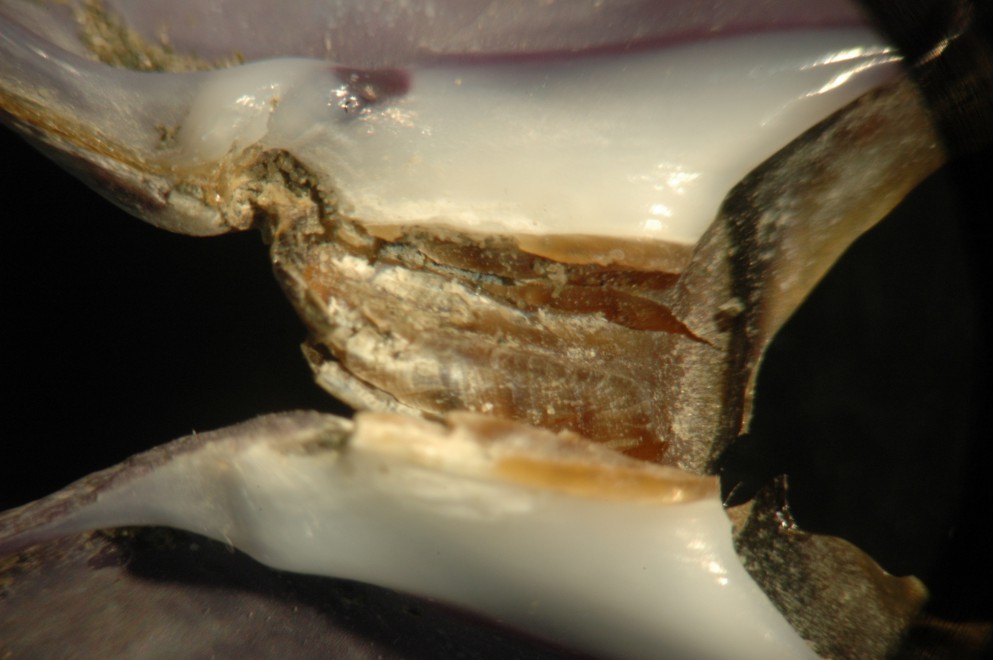
The hinge appears to have only one cardinal tooth per side but keys
say other members of the family such as Gari californica
have 2
cardinal teeth per side.
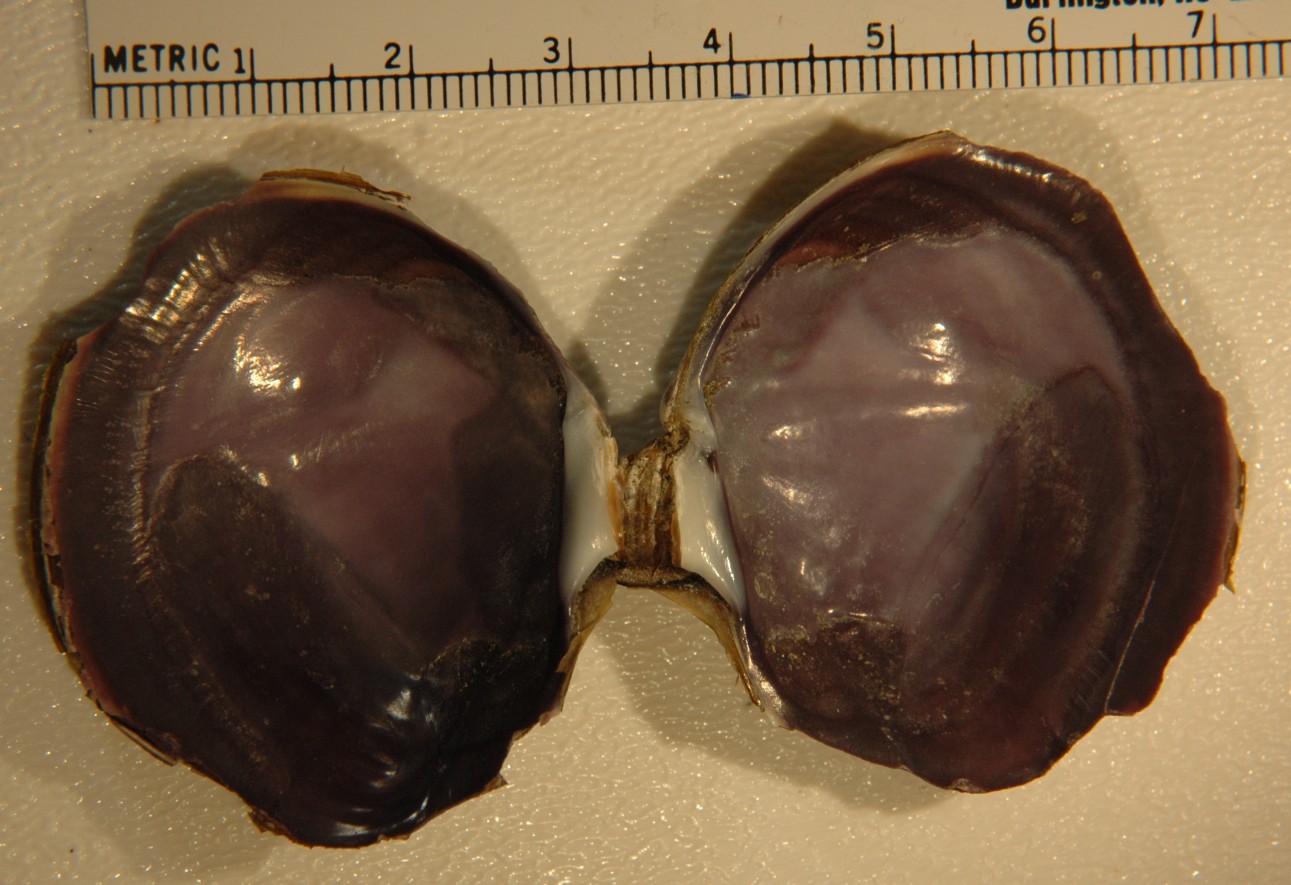
The interior of the shell is purple. Anterior is up in this
photo.
The left valve is to the right and the right valve is to the left.
Because the clam has long siphons there is a deep pallial
sinus, as can be seen at the bottom right of the photo.
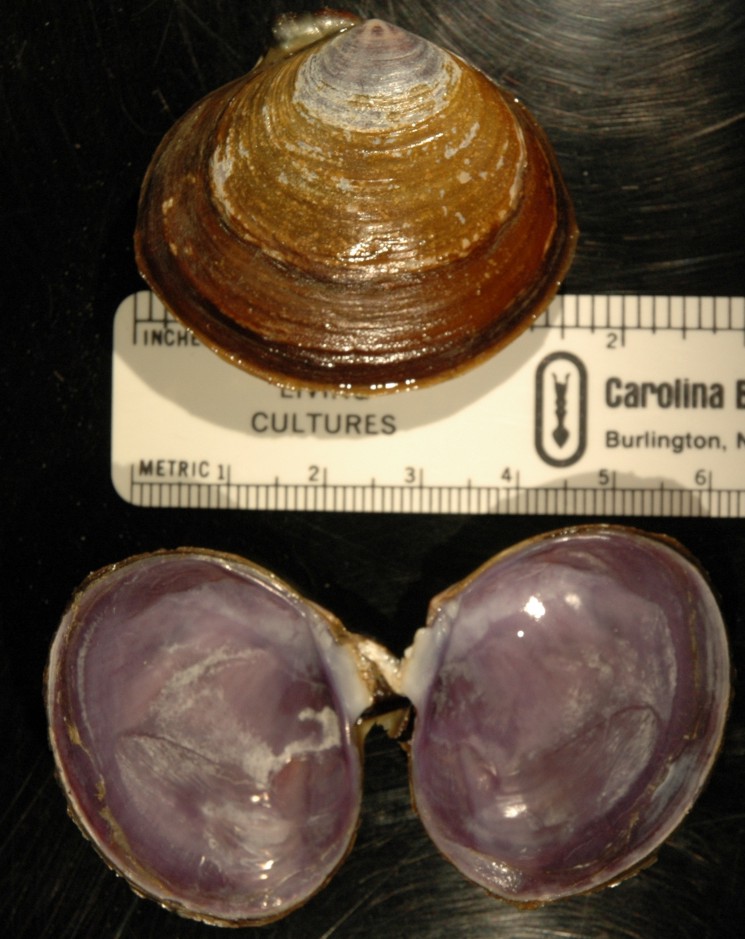
These clams were purchased fall 2006 from the local Walla Walla Safeway
store. The upper clam is still alive.
(the lower one was eaten by a red octopus in the lab)
Note the prominent external hinge ligament on the live individual.
| Some individuals can get quite large. Here is an unusually large individual found in 2020 at the mouth of the Skagit River. Photos by Dave Cowles, July 2020 | |
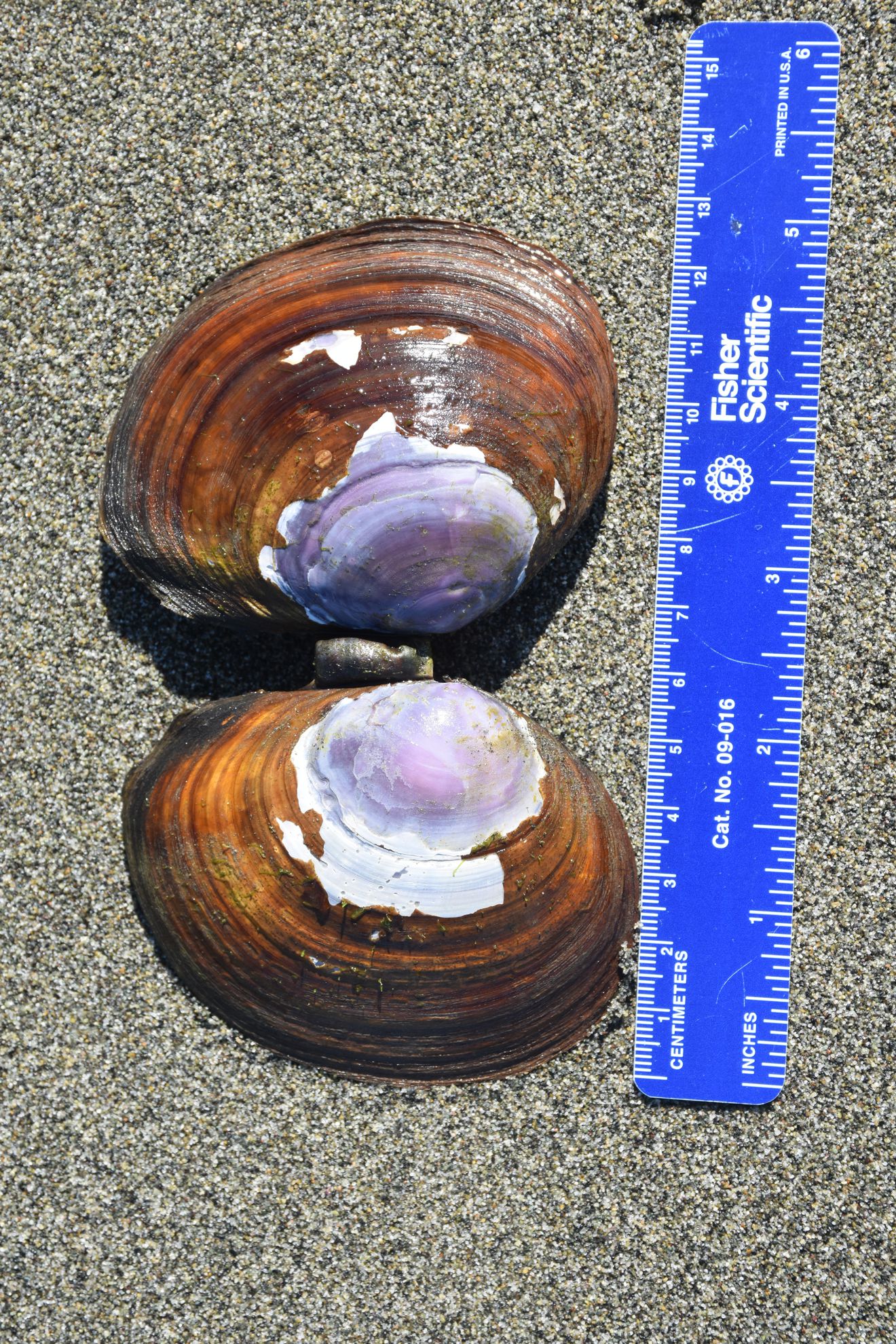 | 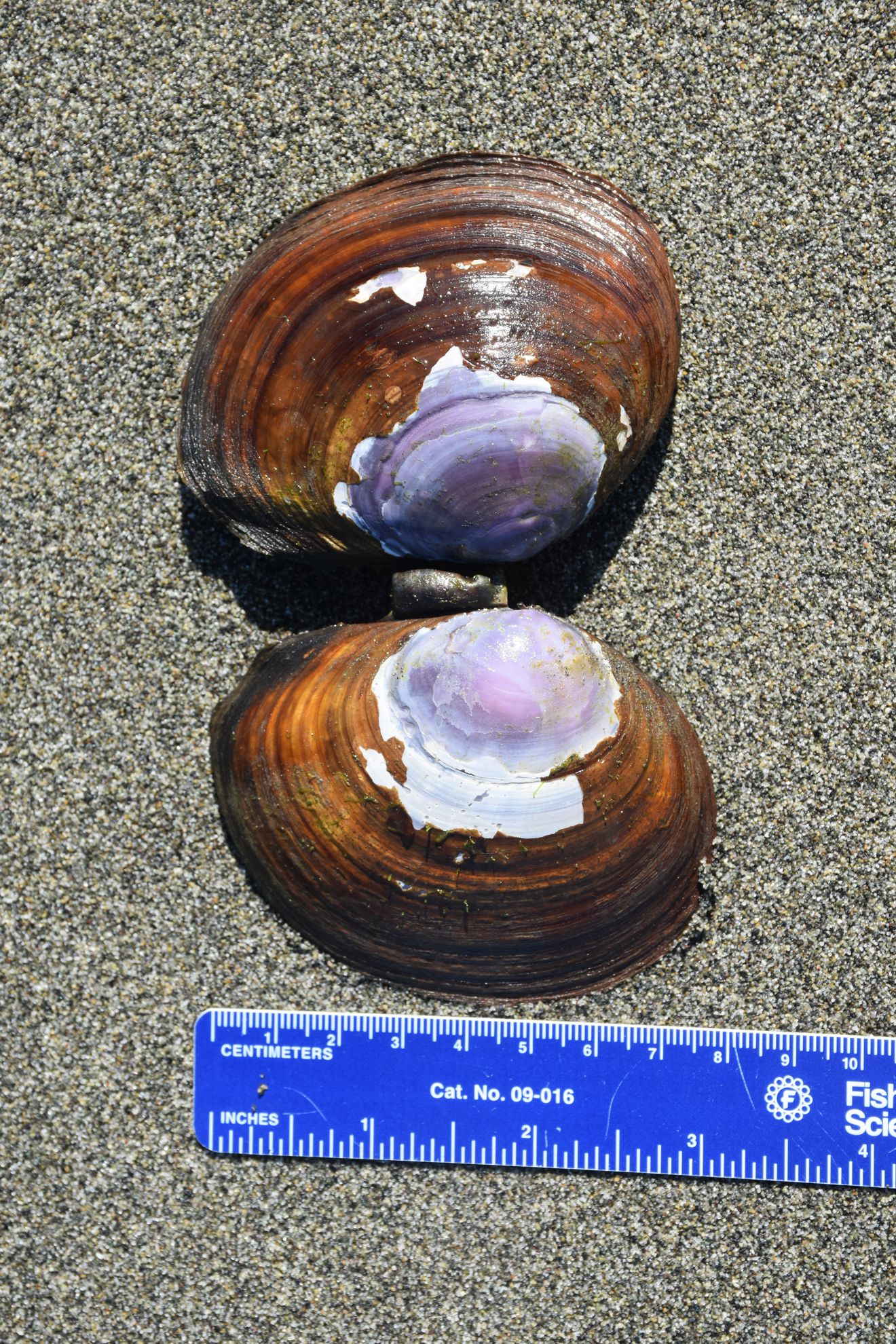 |
Authors and Editors of Page:
Dave Cowles (2006): Created original page